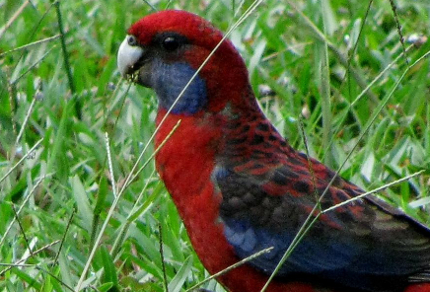Clear sky, mellow cricket songs, and the rousing “chow-chow-chows” and rollicking warbles of a male chowchilla blasting at high volume in the rainforest behind our Paluma Dreaming unit greeted Vilis and me at dawn. After breakfast, we strolled the streets of Paluma in search of more birds enticed into song or view by the morning sun, which first lit the upper canopy of the rainforest before touching the streets with its warmth. Emerald doves with pink-brown bodies highlighted by brilliant green wings pecked at the ground at a road’s edge, and crimson rosellas fussed in trees and foraged on grasses in the village green. A noisy pitta – all shades of blue, green, brown, and black – sauntered down a gravel road ahead of us. A spotted catbird yowled and growled from high in a tree, so captivating me with its raunchy calls that Vilis and I scanned the treetops until I spotted the noisy culprit, with its green back and tail, spotted yellow belly, and grey-and-brown-striped face. This morning’s avian sightings were more what I had anticipated for Paluma; perhaps yesterday, the birds had been subdued by thick mist.
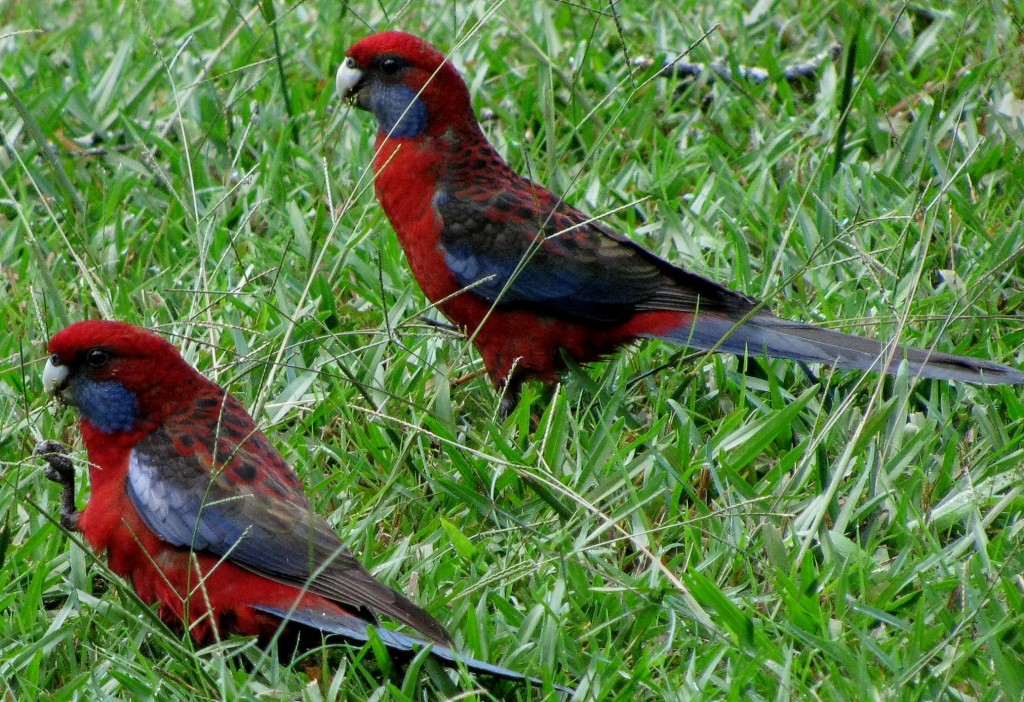
Crimson Rosellas on Paluma Village Green (©Vilis Nams)
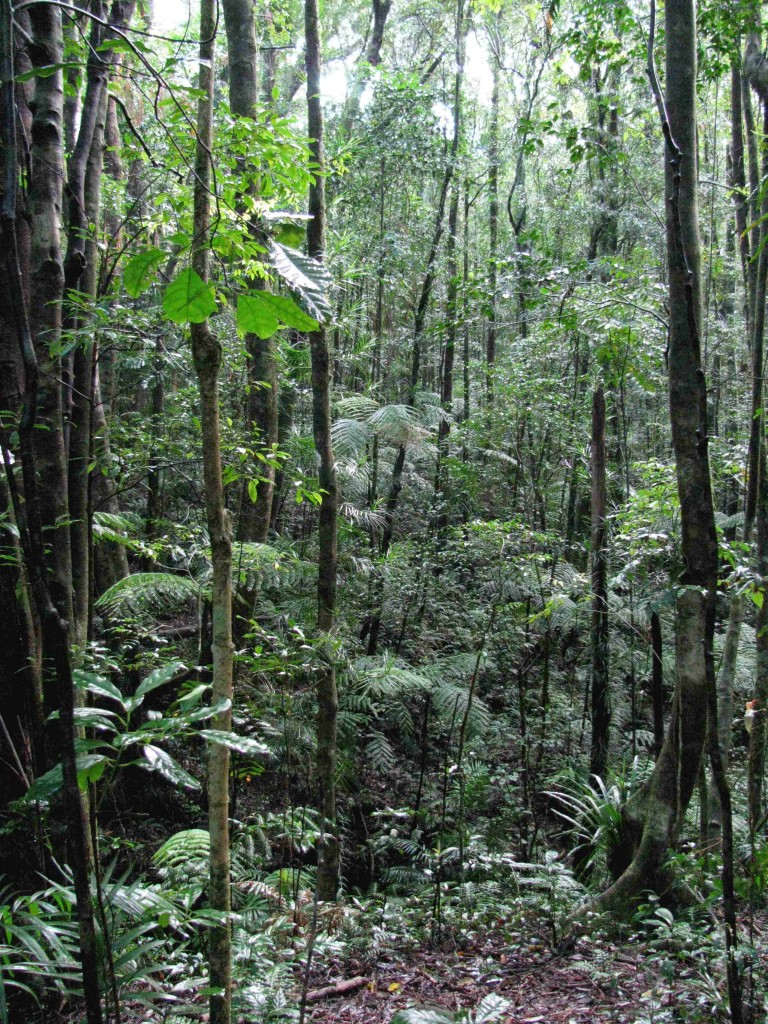
Sunlit Paluma Rainforest (©Vilis Nams)
It was that kind of mist that caused the Nywaigi people to name this place Munan Gumburu, meaning ‘Misty Mountain.’ This we learned from an interpretive sign at the Gumburu Environmental Education Centre tucked in the Paluma rainforest. We followed a trail through the forest beside the Gumburu centre, which is run by the Townsville Diocese of the Catholic Church. Then we descended cemented brick steps to a peaceful platform and bench overlooking a ravine and creek. Again, the forest was thick around us, with vines, ferns, and young trees. This morning they were lit by sunlight rather than shrouded by mist. We spotted basket ferns that resembled rounded, fern-filled wall planters decorating the rainforest trees and street trees throughout the village.
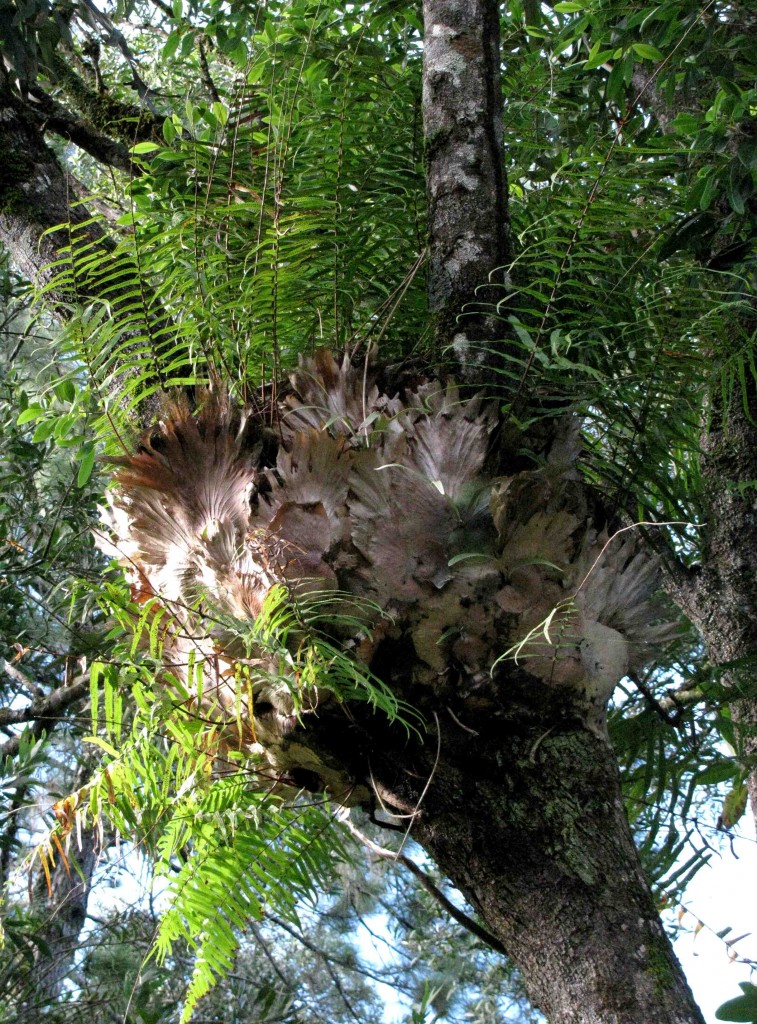
Basket Fern (©Magi Nams)
As we strolled, I was hard pressed to keep up with the abundant birdlife that increasingly filled the village with sound and movement. We spotted several white-cheeked honeyeaters enjoying a breakfast of nectar in a tree covered with pink, pom-pom blossoms, one of the honeyeaters accommodating us by preening and staring intently at Vilis while he photographed it. A brown gerygone sang its ‘Which is it?’ song, and a brush-turked paraded across the main street, its black, vertically-flattened tail fanned high. A flamboyantly-plumaged male golden whistler with black hood and breastband contrasting sharply with its white chin, golden underparts, and olive geen back sang brilliant, sweet notes. The rainforest, which had withheld its avian gifts yesterday, tossed them one after another at our feet today.
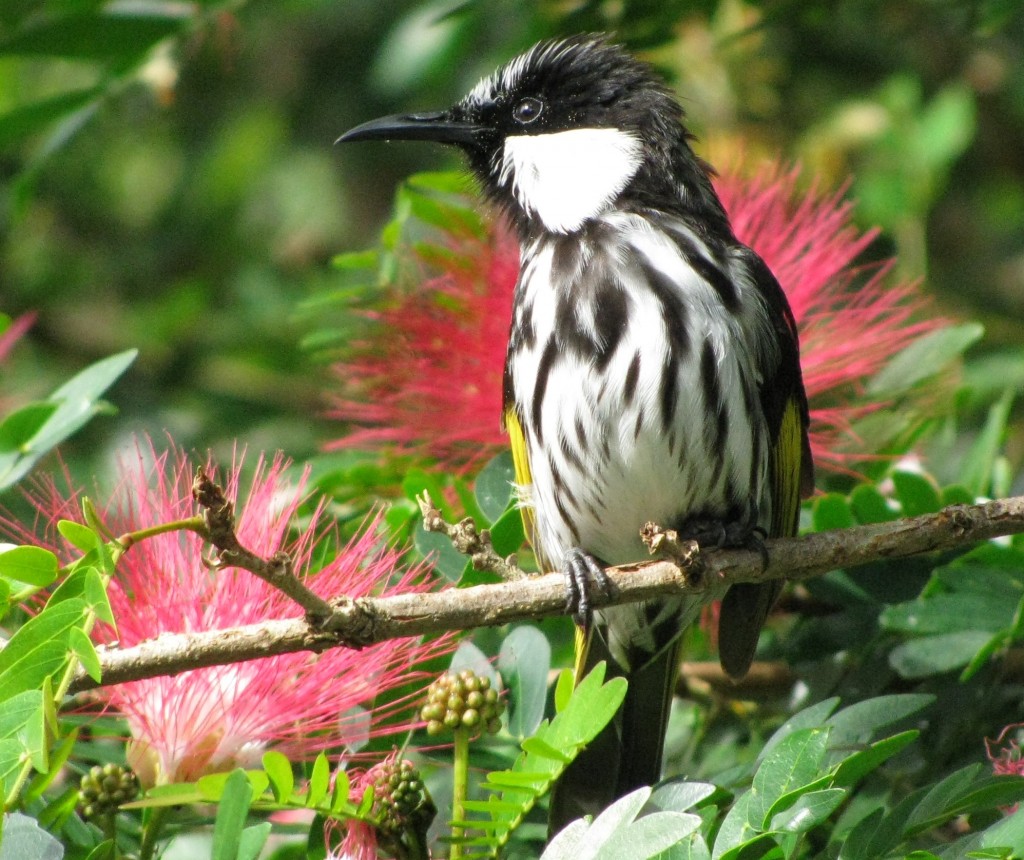
White-cheeked Honeyeater in Paluma (© Vilis Nams)
Today’s birds: chowchilla, *emerald doves, crimson rosellas, noisy pitta, *brown gerygone, *spotted catbird, *fern-wren, white-cheeked honeyeaters, eastern spinebill, Australian brush-turkey, grey fantails, sulphur-crested cockatoo, *golden whistler. (*lifelist sighting)

